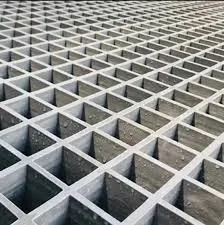
-
 Afrikaans
Afrikaans -
 Albanian
Albanian -
 Amharic
Amharic -
 Arabic
Arabic -
 Armenian
Armenian -
 Azerbaijani
Azerbaijani -
 Basque
Basque -
 Belarusian
Belarusian -
 Bengali
Bengali -
 Bosnian
Bosnian -
 Bulgarian
Bulgarian -
 Catalan
Catalan -
 Cebuano
Cebuano -
 China
China -
 China (Taiwan)
China (Taiwan) -
 Corsican
Corsican -
 Croatian
Croatian -
 Czech
Czech -
 Danish
Danish -
 Dutch
Dutch -
 English
English -
 Esperanto
Esperanto -
 Estonian
Estonian -
 Finnish
Finnish -
 French
French -
 Frisian
Frisian -
 Galician
Galician -
 Georgian
Georgian -
 German
German -
 Greek
Greek -
 Gujarati
Gujarati -
 Haitian Creole
Haitian Creole -
 hausa
hausa -
 hawaiian
hawaiian -
 Hebrew
Hebrew -
 Hindi
Hindi -
 Miao
Miao -
 Hungarian
Hungarian -
 Icelandic
Icelandic -
 igbo
igbo -
 Indonesian
Indonesian -
 irish
irish -
 Italian
Italian -
 Japanese
Japanese -
 Javanese
Javanese -
 Kannada
Kannada -
 kazakh
kazakh -
 Khmer
Khmer -
 Rwandese
Rwandese -
 Korean
Korean -
 Kurdish
Kurdish -
 Kyrgyz
Kyrgyz -
 Lao
Lao -
 Latin
Latin -
 Latvian
Latvian -
 Lithuanian
Lithuanian -
 Luxembourgish
Luxembourgish -
 Macedonian
Macedonian -
 Malgashi
Malgashi -
 Malay
Malay -
 Malayalam
Malayalam -
 Maltese
Maltese -
 Maori
Maori -
 Marathi
Marathi -
 Mongolian
Mongolian -
 Myanmar
Myanmar -
 Nepali
Nepali -
 Norwegian
Norwegian -
 Norwegian
Norwegian -
 Occitan
Occitan -
 Pashto
Pashto -
 Persian
Persian -
 Polish
Polish -
 Portuguese
Portuguese -
 Punjabi
Punjabi -
 Romanian
Romanian -
 Russian
Russian -
 Samoan
Samoan -
 Scottish Gaelic
Scottish Gaelic -
 Serbian
Serbian -
 Sesotho
Sesotho -
 Shona
Shona -
 Sindhi
Sindhi -
 Sinhala
Sinhala -
 Slovak
Slovak -
 Slovenian
Slovenian -
 Somali
Somali -
 Spanish
Spanish -
 Sundanese
Sundanese -
 Swahili
Swahili -
 Swedish
Swedish -
 Tagalog
Tagalog -
 Tajik
Tajik -
 Tamil
Tamil -
 Tatar
Tatar -
 Telugu
Telugu -
 Thai
Thai -
 Turkish
Turkish -
 Turkmen
Turkmen -
 Ukrainian
Ukrainian -
 Urdu
Urdu -
 Uighur
Uighur -
 Uzbek
Uzbek -
 Vietnamese
Vietnamese -
 Welsh
Welsh -
 Bantu
Bantu -
 Yiddish
Yiddish -
 Yoruba
Yoruba -
 Zulu
Zulu
grp duct
Understanding GRP Ducts An Essential Component in Modern HVAC Systems
In the ever-evolving world of building design and construction, the emphasis on efficiency, sustainability, and performance is crucial. One of the unsung heroes in this effort is the Glass Reinforced Plastic (GRP) duct. GRP ducts are becoming increasingly popular in the HVAC (Heating, Ventilation, and Air Conditioning) industry due to their unique blend of properties that outperform traditional materials such as metal and standard plastic.
What is GRP?
GRP is a composite material made from a polymer matrix reinforced with glass fibers. This combination results in a lightweight, durable, and corrosion-resistant product suitable for various applications, particularly in environments where moisture and chemical exposure are prevalent. The versatility of GRP makes it an ideal choice not only for ductwork but also for tanks, pipes, and other structures requiring strength and resilience.
Advantages of GRP Ducts
1. Corrosion Resistance One of the most significant advantages of GRP ducts is their resistance to corrosion. In many industries, including chemicals and pharmaceuticals, the risk of corrosion from aggressive substances can seriously compromise the integrity of the ductwork. GRP's resistance to chemical attack ensures longevity and reduces the need for frequent replacements.
2. Lightweight Design GRP ducts are significantly lighter than traditional metal ducts. This property simplifies handling and installation, leading to reduced labor costs and installation times. Moreover, the lightweight nature of GRP allows for reduced structural support requirements, which can be a considerable cost-saving in large installations.
grp duct

3. Thermal Insulation The thermal insulation properties of GRP help maintain the desired temperature within the ductwork. This feature enhances energy efficiency by minimizing heat loss or gain, ultimately contributing to lower energy bills and a reduced carbon footprint. As businesses increasingly prioritize sustainability, using GRP ducts aligns with green building practices.
4. Noise Reduction GRP ducts have inherent sound-damping qualities that can significantly reduce noise levels in HVAC systems. This is particularly important in commercial and residential buildings, where noise pollution can affect comfort and productivity. By choosing GRP, architects and engineers can create quieter internal environments without compromising on efficiency.
5. Design Flexibility The manufacturing process of GRP allows for flexibility in design. Custom shapes and sizes can be easily created to fit specific building requirements. This adaptability ensures that ducts can be integrated seamlessly into any structural layout, optimizing space and performance.
Applications of GRP Ducts
GRP ducts are versatile and can be used across various sectors. In industries where air quality control is paramount, such as pharmaceuticals or food processing, GRP ducts provide a reliable solution by preventing contamination. Additionally, they are widely used in marine applications, where the material's resistance to saltwater corrosion is highly advantageous.
Conclusion
As the building and construction industry continues to push for more innovative and sustainable solutions, GRP ducts have emerged as a leading option in the HVAC sector. Their numerous benefits, including corrosion resistance, lightweight design, thermal insulation, noise reduction, and design flexibility, make them an attractive choice for modern buildings. Companies looking to enhance their infrastructure while prioritizing efficiency and sustainability should consider integrating GRP ducts into their systems. As we move towards a greener future, the adoption of such advanced materials plays a vital role in shaping safe, sustainable, and efficient environments.









